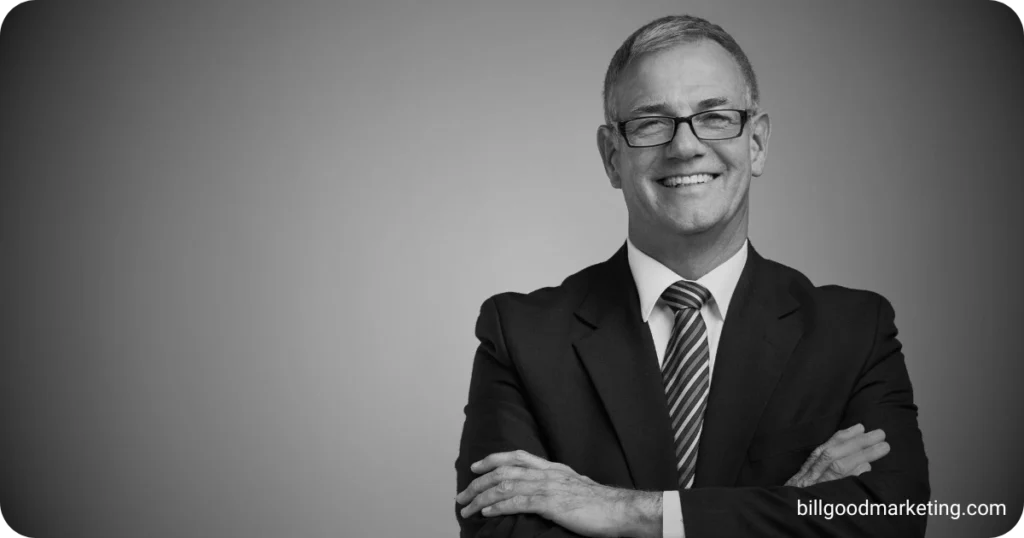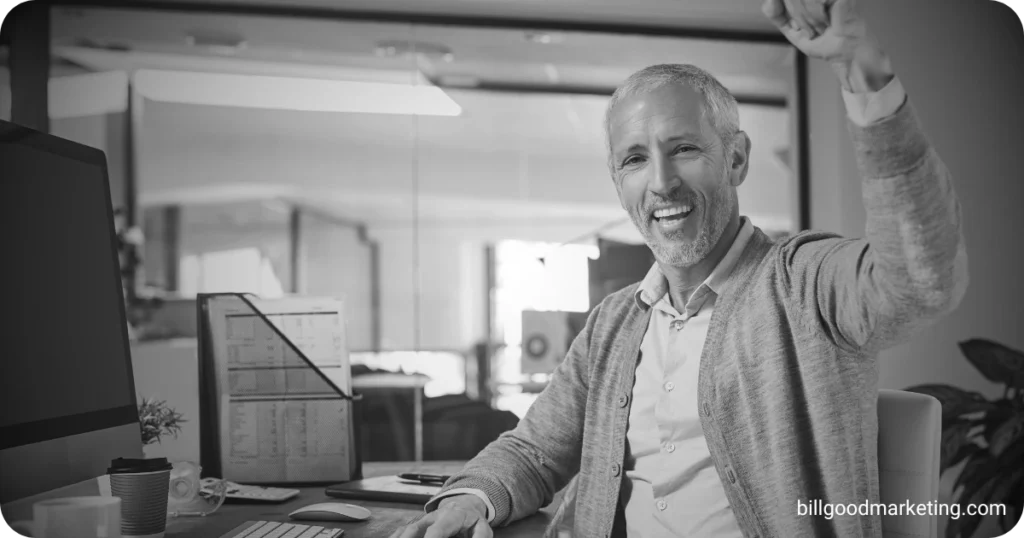Financial advisor burnout doesn’t always look the way you think it does. You’re not working 100-hour weeks. You’re not collapsing from exhaustion. But something’s off.
You wake up already dreading your first call.
You scroll past emails you meant to respond to yesterday.
You can’t shake the feeling that you’re behind, even when you’re technically “caught up.”
And if you’re like most financial advisors, you tell yourself, “This is just part of the job.”
It’s not.
The real problem isn’t how many hours you’re working. It’s what those hours are filled with.
You didn’t build your financial planning business to spend half your week buried in compliance documents, chasing paperwork, or fielding emails from low-revenue clients. And yet, that’s where most of your energy goes. That constant drain on your mental health and well-being doesn’t just chip away at your productivity—it chips away at your passion.
Here’s the truth: advisor burnout isn’t about hard work. It’s about working on the wrong things.
At Bill Good Marketing, we’ve worked with thousands of advisors over the last four decades, and here’s what we’ve learned: burnout rarely comes from providing great service or closing new business.
It comes from the endless pile of administrative junk and unpredictable marketing that steals time from what you actually enjoy—building relationships, delivering financial advice, and growing your business.
In this article, we’ll unpack the real warning signs of financial advisor burnout, the hidden culprits (spoiler: it’s probably not your schedule), and how to avoid burnout through better systems, workflows, and practice management strategies.
Because when you realign your work with what you love, everything gets easier—your client relationships, your work-life balance, even your bottom line.
And here’s the kicker—if you’re feeling this way, you’re not alone:
- In one study from the Financial Planning Association, 71% of advisors reported being stressed out.
- 28% said they had more stress than the previous year.
- And 44% said their stress levels were higher than they were five years ago.
Source: US News
Burnout isn’t a personal failure—it’s an industry-wide challenge. Let’s look at how it shows up.

What Burnout Really Looks Like for Financial Advisors
Burnout isn’t always a dramatic collapse. Sometimes it’s subtle. Creeping. Quiet.
It shows up as procrastination on tasks that used to be easy. A short fuse with your team. That sinking feeling when a meeting gets rescheduled—and instead of relief, you feel panic because now you’re double-booked.
These are classic warning signs of advisor burnout. But because they don’t come with a siren or a diagnosis, many financial professionals overlook them until the damage is done.
Here are a few other symptoms of burnout you might recognize:
- You’re mentally exhausted by midweek—even if the week’s been “light.”
- You’ve lost the excitement of prospecting or onboarding new clients.
- You feel distant from your client base, and client interactions feel transactional instead of meaningful.
- You’re putting off marketing and business growth projects, even the ones you used to enjoy.
- You’re more reactive than strategic, and it’s affecting your ability to focus on long-term goals.
Burnout affects your mental health, your productivity, and eventually… your reputation.
But again, it’s not about laziness or weakness. It’s about misalignment.
Most financial advisors got into this business to help people, grow wealth, and build real relationships—not to spend their days wrestling with CRMs, compliance, writing checks for marketing campaigns that never deliver, and constant admin work.
It’s Not About the Hours
We’ve worked with CFPs at large RIAs, solo shops, independents, and wirehouses. And across the board, burnout rarely has anything to do with working too much.
In fact, some of the most overwhelmed advisors we meet are only working 40–45 hours a week.
The issue isn’t quantity—it’s quality.
If you’re spending 10 of those hours deep in compliance, 5 more managing service tickets from clients with less than $50k in assets, and another chunk putting out fires in your inbox, of course you’re going to feel drained. You’ve packed your week with tasks that fall outside of what YOU really like to do.
That’s not sustainable. And it’s not the best use of your time as a financial planner.
You deserve a work week filled with clarity, momentum, and joy.
But to get there, you start by recognizing what’s really burning you out—and then get ruthless about removing it.

The Hidden Burnout Triggers — What’s Actually Wearing You Down?
While financial advisor burnout feels like an emotional or mental issue, it often starts as a structural one.
It’s not just that you’re tired. It’s that your practice management is such that you’re overloaded with things you were never meant to carry.
Ask yourself: What part of your job do you actively dread?
If you’re like most financial advisors, the answer includes one (or more) of the following:
- Servicing clients who are not aligned with how you do business
- Constantly reacting to emails, calls, and compliance requests
- Manually managing workflows that could be automated
- Feeling like you’re on the edge of a marketing funnel, with no follow-up system
- Handling tasks that dilute your value proposition
Burnout creeps in when you spend your best hours on the wrong work.
And here’s the kicker: those small tasks aren’t just draining your energy—they’re stealing your client engagement. They’re preventing you from connecting with the people who fuel your business and your purpose.
Are You Running a Business or a Juggling Act?
It’s a question worth asking.
Because right now, you may feel like you’re juggling chainsaws—with a blindfold on.
You’re checking in on low-AUM clients, prepping for meetings, chasing paperwork, and trying to build a brand on social media… all while the markets are whipsawing and your calendar keeps shifting.
The emotional toll of market volatility alone can be staggering. Every time a headline drops, you brace for a flood of client calls—and the weight of reassuring everyone takes a toll on your mental health and stress levels.
But it wasn’t always this way.
Before the pandemic, you may have had more structure. Maybe even more help. But remote work, staffing shifts, and changing client expectations blew up that rhythm—and left a lot of advisors in permanent “catch-up” mode.
Even the most seasoned financial services industry professionals are struggling to feel in control.
That’s not failure. That’s a systems problem.
You don’t need another time management hack.
You need a complete shift in how your business runs—so you can stop reacting and start leading.

How to Avoid Burnout & Reclaim the Joy of Wealth Management
Let’s talk about why you got into this business in the first place.
You didn’t become a financial planner to organize compliance files and chase down signatures. You did it to help people. To deliver real financial planning. To make confident recommendations that change someone’s future—and see the look of relief or hope on their face.
That spark is still there. But burnout dims it.
Here’s the good news: most financial advisors don’t need a vacation.
They need a recalibration—a return to the parts of the business that energize them.
Let’s list them:
- Building deeper client relationships with your favorite clients
- Crafting smart, personalized financial plans
- Talking with new clients who are a fit for your model
- Coaching people toward their long-term goals
- Leading a capable team, not micromanaging them
When advisors are in their zone—leading, advising, strategizing—they thrive.
The challenge is reclaiming that space.
You need better systems. You need delegation. You need a predictable marketing engine that runs even when you’re focused on clients. You need to spend less time fixing problems and more time creating value.
The Joy-to-Junk Ratio
One of the first things we ask our advisors is: “What percentage of your week is joyful?”
Not just “tolerable.”
Not “productive.”
Joyful.
The goal is an 80/20 split—80% of your time spent in high-impact, high-enjoyment activities.
The other 20%? That’s the “junk” you minimize or offload.
To fix your work-life balance, you first need to identify what’s causing the imbalance.
Here’s a quick exercise:
- Write down your top 3 energy-draining tasks
- Ask yourself: Can these be automated, delegated, or eliminated?
- Now list the 3 activities that remind you why you chose the financial advisory industry
This clarity is powerful.
Because when your schedule aligns with your strengths, your stress levels go down. Your physical health improves. And your mental health stabilizes—without needing to step away from the business.
Your well-being matters. And your best work? It happens when you’re excited to open your calendar, not dreading it.
3 Ways to Reduce Advisor Burnout Right Now

1. Delegate What You Dread
Let’s be blunt: If you’re doing work you hate, you’re not doing your best work.
Delegation isn’t a luxury, it’s a necessity. Especially when you’re the face of your firm.
Too many financial advisors are buried in tasks that have nothing to do with financial planning or client success:
- Sorting through compliance requests
- Manually handling scheduling and follow-up
- Servicing accounts that drain energy but barely touch your revenue
Your value proposition isn’t in admin work. It’s in advising.
If your calendar is full of low-impact activities, it’s time to restructure. Outsource. Hire support. Leverage a paraplanner. Use a virtual assistant. Build a system to take the burden off your plate.
Burnout doesn’t go away with more effort—it fades when you remove the things that fuel it.
And the #1 thing our most successful advisors say helped them reclaim their time?
Delegation.
That one decision lowers stress levels, improves client relationships, and frees you up to serve the people who value you most.

2. Organize to Reduce Chaos
You can’t eliminate stress if your entire business is reactive.
Advisors who feel burned out often don’t lack discipline—they lack workflows.
- A repeatable onboarding process for new clients
- A clear and segmented calendar based on your client service models
- A process for check-ins, follow-up, and annual reviews
These systems are more than just efficient—they’re a lifeline for your sanity.
Want to boost client retention? It starts with consistency.
Clients notice when they’re cared for, and structured systems allow you to scale without dropping balls—or burning out your team.
And let’s not forget how much easier it is to make great decisions when you’re not constantly putting out fires.

3. Adopt Better Marketing & Prospecting Systems
If you want to reduce burnout, you need to stop treating marketing like an afterthought.
Too many financial advisors squeeze it in during the leftover hours of the week—after client meetings, admin work, compliance reviews, and everything else.
But here’s the reality: inconsistent marketing doesn’t just slow your growth. It increases your stress.
Without a system, you’re constantly asking:
- “What should I send this week?”
- “Did I follow up with that lead, again?”
- “How do I find time to write this market update?”
That mental clutter leads to burnout just as fast as overbooking your calendar.
Instead, you need a repeatable, proactive system that makes marketing part of your weekly rhythm—not a fire drill. Here’s how to build one:
Create a Marketing Calendar
Start by mapping out a simple plan. Include:
- Monthly themes (e.g., retirement planning in April, tax strategies in November)
- Email topics or newsletters to send to your client base
- Follow-up sequences for new clients and prospects
- Social media posts tied to timely events or your niche
Having a visual calendar turns marketing from a vague idea into a manageable system.
Build a Follow-Up Sequence That Works While You Work
You don’t need to write every email manually.
Set up automated workflows for common scenarios:
- After a first prospect meeting
- After a seminar or client event
- For re-engagement (e.g., “Haven’t heard from you in a while…”)
Each message should sound like you—personal, clear, helpful—but run automatically in the background (with maybe a few sentences of customization). This improves client engagement without requiring your constant attention.
Start With One Core Channel to Stay Top-of-Mind
You don’t need to do everything. But you do need to do something consistently.
Choose one core platform that aligns with your audience:
- Weekly email newsletter
- Monthly direct mail (my personal favorite)
- Regular podcast or video updates
- Quarterly print pieces for high-value clients
Pick the channel that plays to your strengths and feels sustainable. Then commit. Showing up consistently builds trust—and removes the stress of figuring out what to do next.
Once you’ve found your rhythm add another channel… and another… and another! The goal is to have five predictable channels — but you MUST start with one (done well) first.
Tie Marketing to Long-Term Goals
Don’t just send content to send content. Tie it to your business planning strategy.
- Want to bring in more high-net-worth clients? Craft stories or case studies that highlight those wins.
- Trying to reduce churn? Educate clients so they feel confident during market volatility.
- Want to grow referrals? Share insights that clients would forward to friends or family.
The goal is alignment: your marketing should reflect where you want to go, not just where you are.
When you build a marketing system around your strengths, your stress levels drop. Your brand becomes more consistent. You attract better new clients, serve existing ones more deeply, and preserve your mental health in the process.
This is what it means to go from reactive to strategic—and to market without burning out.

You’re Not Alone—And You Don’t Have to Stay Burned Out
If you’re feeling burned out, here’s the main thing you need to hear: You’re not the problem.
The system is.
The financial services industry is built on hustle. On pushing harder. On gritting your teeth and getting through it. But that’s not a strategy—it’s a shortcut to exhaustion.
Because burnout doesn’t just happen to new advisors. It happens to top producers. To veteran CFPs. To Forbes Best-in-State Advisors.
It happens when your weeks get hijacked by admin work, when your calendar feels like a trap, and when the joy of helping people gets buried under to-dos that don’t move the needle.
But there is another way.
At Bill Good Marketing, we’ve spent over 45 years helping financial professionals rediscover what they love about this business—by giving them the tools, strategies, and systems to get out of the weeds and back into their zone of joy.
We help advisors:
- Rebuild their time around what brings them energy
- Reorganize their client base around value—not guilt
- Streamline workflows so nothing falls through the cracks
- Design marketing strategies that actually support their well-being instead of sabotaging it
We’ve seen solo advisors double production in two years (or less)—not by working more, but by finally working on the right things.
We’ve helped teams reduce churn, increase retention, and fall back in love with the business they built.
And we’ve guided hundreds of advisors from burnout to clarity—so they can stop surviving… and start scaling with purpose.
You Deserve a Business That Works for You
You didn’t come this far to build a business that burns you out.
You came here to make an impact.
To serve others.
To support your personal life while pursuing your long-term goals.
And that’s possible.
But not with the current load you’re carrying.
It starts by stepping back. Re-evaluating. Rebuilding.
So here’s our invitation: If you’re tired of feeling like you’re doing everything—but nothing’s moving— let’s talk.
We’ll help you assess what’s causing the burnout, identify what to change, and show you how to build a business that doesn’t just grow… It grows you, too.
About the Author

Andrew D. White is the Director of Marketing at Bill Good Marketing, a firm with over 45 years of experience helping financial advisors scale their businesses. With deep expertise in advisor marketing, client acquisition, and retention strategies, Andrew specializes in creating high-impact campaigns that drive measurable results. His insights are grounded in real-world experience, working alongside top-performing advisors to refine prospecting, branding, and practice management strategies.




